Scientist
60+ Scientist Interview Questions and Answers

Asked in Indian Space Research Organisation

Q. What is the minimum temperature of any substance that we could reach and use it for practical purposes?
The minimum temperature of any substance that we could reach and use for practical purposes is absolute zero, which is -273.15 degrees Celsius or 0 Kelvin.
The minimum temperature is known as absolute zero.
It is the lowest possible temperature that can be reached.
At absolute zero, all molecular motion ceases.
Practical applications include cryogenics and superconductivity.
Examples of practical uses are in medical imaging, particle accelerators, and space exploration.

Q. Waste water treatment technologies, options of Reverse osmosis treatment at home to make process cheap. Way of zero discharge in industry. Difference in bod and cod. Which form is dangerous of cr6 or cr4.
The answer to the question is provided below.
Reverse osmosis treatment can be made cheaper at home by using low-cost membranes and energy-efficient systems.
Zero discharge in industries can be achieved through the implementation of advanced treatment technologies like membrane filtration and evaporation.
BOD (Biochemical Oxygen Demand) measures the amount of oxygen consumed by microorganisms during the decomposition of organic matter, while COD (Chemical Oxygen Demand) measures...read more
Scientist Interview Questions and Answers for Freshers

Asked in Indian Space Research Organisation

Q. What would you like to do? ( Design of rockets or design of electronic components with heat transfer applications) Then
I would like to design electronic components with heat transfer applications.
I have a strong interest in electronics and how heat can be managed in electronic systems.
I enjoy working on projects that involve designing and optimizing electronic components for efficient heat dissipation.
I have experience in conducting thermal analysis and simulations to ensure proper heat transfer in electronic devices.
I find it fascinating to explore innovative ways to improve heat dissipation...read more

Asked in Indian Space Research Organisation

Q. Humidity ratio- how is it measured? ( Two types) What does 1 ton refrigerator mean? Parts of refrigeration cycle? Which is the smallest component?
Humidity ratio is measured using two types of instruments: psychrometers and hygrometers.
Psychrometers measure humidity ratio by comparing the readings of two thermometers: a dry-bulb and a wet-bulb thermometer.
Hygrometers measure humidity ratio using various principles such as electrical resistance, capacitance, or condensation.
A 1 ton refrigerator refers to the cooling capacity of the refrigerator, which is equivalent to removing 12,000 British Thermal Units (BTUs) of heat ...read more

Asked in Indian Space Research Organisation

Q. IC engines- Spark plug, how combustion takes place, what is dtsi, why is it used, Types of engines- 2 stroke vs 4 stroke
Spark plug ignites fuel-air mixture in IC engines. DTSI improves combustion efficiency. 2-stroke and 4-stroke engines differ in number of strokes per cycle.
Spark plug ignites the fuel-air mixture in the combustion chamber
DTSI (Digital Twin Spark Ignition) is a technology used to improve combustion efficiency by using two spark plugs
2-stroke engines complete one power stroke in two strokes of the piston, while 4-stroke engines complete one power stroke in four strokes of the p...read more

Asked in Indian Space Research Organisation

Q. How many laws of thermodynamics? Applications of each of them. What is dB Amp
There are three laws of thermodynamics. Each law has specific applications. dB Amp is not related to thermodynamics.
The first law of thermodynamics, also known as the law of energy conservation, states that energy cannot be created or destroyed, only transferred or transformed.
The second law of thermodynamics states that the entropy of an isolated system always increases over time.
The third law of thermodynamics states that as the temperature approaches absolute zero, the ent...read more
Scientist Jobs





Q. Are there any processes by which we can create metal prototypes?
Yes, metal prototypes can be made through various processes.
Metal casting: Using molds to create metal prototypes.
Metal additive manufacturing: Using 3D printing to build metal prototypes layer by layer.
Metal machining: Cutting, drilling, or shaping metal to create prototypes.
Metal injection molding: Injecting molten metal into a mold to form prototypes.
Metal extrusion: Forging metal through a die to create prototype shapes.
Metal sheet forming: Bending or shaping metal sheets...read more

Asked in Indian Space Research Organisation

Q. What material will you choose Al or Mg for designing and why? What is concurrent engineering?
The choice between Al and Mg for designing depends on the specific requirements and constraints of the project.
Aluminum (Al) is lightweight, corrosion-resistant, and has good thermal conductivity, making it suitable for applications where weight reduction is important, such as aerospace.
Magnesium (Mg) is even lighter than aluminum, but it has lower strength and is more prone to corrosion. It is commonly used in automotive components to reduce weight and improve fuel efficienc...read more
Share interview questions and help millions of jobseekers 🌟

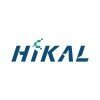
Asked in Hikal

Q. What is QbD development in API process development?
QbD Development in API process development refers to Quality by Design approach for optimizing the development of Active Pharmaceutical Ingredients.
QbD Development focuses on understanding the impact of various parameters on the quality of the API.
It involves systematic identification and control of critical process parameters.
QbD Development aims to enhance product quality, reduce variability, and improve process efficiency.
Examples of QbD tools include design of experiments...read more


Q. How do you compensate for bendback in sheet metal during manufacturing?
Compensating bendback in sheetmetal can be achieved through various methods.
Use a larger bend radius to reduce the amount of bendback
Implement a pre-bend or over-bend technique to counteract the bendback
Utilize specialized tooling or fixtures to control the bending process
Apply heat or annealing to the sheetmetal to reduce its springback tendency
Consider using different materials or alloys with lower springback characteristics


Q. Why is battery management required in Lithium Ion battery solutions?
Battery management is required in Lithium Ion battery solutions to ensure safety, optimize performance, and prolong battery life.
Lithium Ion batteries are prone to overheating and can catch fire or explode if not properly managed.
Battery management systems monitor and control various parameters such as voltage, current, temperature, and state of charge.
These systems prevent overcharging, over-discharging, and overcurrent situations that can damage the battery or reduce its ca...read more
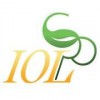
Asked in Iol Chemicals & Pharmaceuticals

Q. What is nitrosamines impurities and how to form in product. Explain its scientific justification.
Nitrosamines are impurities that can form in products due to chemical reactions involving amines and nitrites.
Nitrosamines are a class of chemical compounds that contain a nitroso group (-NO) bonded to an amine group (-NH2).
They can form in products such as pharmaceuticals, cosmetics, and food during manufacturing, storage, or processing.
The formation of nitrosamines typically requires the presence of amines and nitrites, which can react under certain conditions.
Scientific ju...read more

Asked in Indian Space Research Organisation

Q. What is the difference between a rocket and a missile?
A rocket is a vehicle that propels itself through the atmosphere or space, while a missile is a weapon that is guided towards a target.
Rockets are used for space exploration, satellite launches, and transportation, while missiles are used for military purposes.
Rockets are typically unmanned and used for peaceful purposes, while missiles are often armed and used for warfare.
Rockets are designed to carry payloads such as satellites or scientific instruments, while missiles are ...read more

Asked in Biocon Biologics

Q. What software do you know or have used for analyzing data?
I have used various softwares for data analysis including R, Python, Excel, and SPSS.
R
Python
Excel
SPSS


Q. What are the different rapid prototyping processes?
Different rapid prototyping processes include 3D printing, CNC machining, and injection molding.
3D printing: Additive manufacturing technique that creates objects layer by layer using a digital model.
CNC machining: Computer-controlled subtractive manufacturing process that uses pre-programmed tools to remove material from a solid block.
Injection molding: Process of injecting molten material into a mold cavity to create a solid object.
Asked in Cropnosys India

Q. What is your experience in operating a fermentor?
I have extensive experience in operating fermentors for various scientific experiments and research projects.
I have operated fermentors in a laboratory setting for over 5 years.
I am proficient in setting up and calibrating fermentors for different types of cultures.
I have monitored and controlled fermentation parameters such as temperature, pH, and agitation.
I have experience in troubleshooting and resolving issues that may arise during fermentation processes.
I have successfu...read more

Asked in Anthem Biosciences

Q. What is the difference between Normal Phase and Reverse Phase chromatography?
Normal phase and Reverse phase are two types of chromatography techniques used for separation of molecules based on their polarity.
Normal phase chromatography uses a polar stationary phase and a non-polar mobile phase, while reverse phase chromatography uses a non-polar stationary phase and a polar mobile phase.
Normal phase is used for separation of polar compounds, while reverse phase is used for separation of non-polar compounds.
Examples of normal phase chromatography inclu...read more

Asked in Suven Life Sciences

Q. If you have a 2M solution of sulfuric acid, how can you dilute it to a 0.1M solution?
Dilute a 2M sulfuric acid solution to 0.1M by adding water in a controlled manner.
Calculate the dilution factor: 2M to 0.1M is a dilution factor of 20.
Use the formula C1V1 = C2V2, where C1 is the initial concentration, V1 is the initial volume, C2 is the final concentration, and V2 is the final volume.
For example, to make 1L of 0.1M solution, use 50mL of 2M sulfuric acid and dilute it with 950mL of water.
Always add acid to water, not water to acid, to prevent exothermic react...read more

Asked in Suven Life Sciences

Q. How can you convert an acid to an amine? Which name reaction it is and explain the mechanism?
Acids can be converted to amines via reductive amination, a process involving amine formation from carbonyl compounds.
Reductive amination involves the reaction of an aldehyde or ketone with an amine.
The process typically uses a reducing agent like sodium cyanoborohydride (NaBH3CN).
Example: Converting acetic acid (CH3COOH) to ethylamine (CH3CH2NH2) via the formation of an intermediate.
This reaction is often catalyzed by acids to facilitate the formation of the imine intermedia...read more

Asked in Indian Space Research Organisation

Q. What are the different types of counters, and how would you design a divide-by-5 counter?
There are several types of counters that can be used to design a divide by 5 counter.
Ripple counter
Synchronous counter
Johnson counter
Ring counter
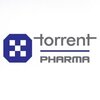
Asked in Torrent Pharmaceuticals

Q. What are the RDC guidelines for validation, and what are the key differences between RDC and BZ guidelines?
RDC guidelines for validation differ from bz guidelines in key aspects.
RDC guidelines focus on analytical validation of biomarkers
Bz guidelines focus on clinical validation of biomarkers
RDC guidelines emphasize on assay performance characteristics
Bz guidelines emphasize on clinical utility and patient outcomes
RDC guidelines require rigorous statistical analysis
Bz guidelines require validation in multiple independent cohorts

Asked in Bharat Electronics

Q. What is the latest propulsion system that you have built?
The last propulsion system I built was a hybrid rocket engine for a small satellite.
Developed a hybrid rocket engine using a combination of solid fuel and liquid oxidizer
Tested the engine for efficiency and performance
Integrated the propulsion system into a small satellite for orbital maneuvers

Asked in Biocon Biologics

Q. How do you decide which genes to knock out?
Genes are selected based on their potential role in a specific biological process or disease.
Identify the biological process or disease of interest
Consult existing literature and databases to identify candidate genes
Prioritize genes based on their known function and relevance to the process/disease
Use genetic engineering techniques to knock out the selected genes
Analyze the resulting phenotype to confirm the gene's role
Asked in E2E Biotech

Q. How do you solve technical issues arising during downstream processing?
Technical issues during downstream processing can be solved by identifying the root cause and implementing appropriate solutions.
Identify the root cause of the issue
Implement appropriate solutions such as adjusting process parameters or changing equipment
Perform thorough testing and validation of the solution
Document the issue and solution for future reference

Asked in Indian Space Research Organisation

Q. Wind tunnels, materials & their properties
Wind tunnels are used to study the effects of air on objects. Materials and their properties play a crucial role in wind tunnel experiments.
Wind tunnels are used to simulate the flow of air around objects, allowing scientists to study aerodynamics.
Different materials have different properties that can affect the results of wind tunnel experiments.
Materials with low drag coefficients, such as smooth metals, are often used in wind tunnel testing.
Understanding the properties of ...read more

Asked in Cropdata Technology

Q. What are agronomic practices in different crops?
Agronomic practices refer to the methods used to cultivate crops and improve their yield and quality.
Crop rotation
Tillage practices
Fertilization
Irrigation
Pest and disease management
Harvesting techniques

Asked in Biocon Biologics

Q. What is post-translational modification?
Post translational modification refers to the chemical modification of a protein after it has been synthesized.
Common modifications include phosphorylation, glycosylation, and acetylation.
These modifications can alter the protein's function, stability, and localization.
Examples of post translational modification include the addition of a phosphate group to a serine or threonine residue, or the addition of a sugar molecule to an asparagine residue.
Post translational modificati...read more

Asked in Reliance Industries

Q. Elaborate particular techniques like cytotoxicity assays, ELISA, Western blot etc.
Cytotoxicity assays, ELISA, Western blot are techniques used in molecular biology and biochemistry.
Cytotoxicity assays are used to determine the toxicity of a substance on cells.
ELISA is used to detect and quantify specific proteins or antibodies in a sample.
Western blot is used to detect specific proteins in a sample using antibodies.
Other techniques include PCR, gel electrophoresis, and flow cytometry.
These techniques are commonly used in research and diagnostic laboratorie...read more
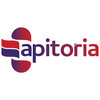
Asked in Apitoria Pharma

Q. What are the methods for rectifying quarries?
Rectifying quarries involves methods to restore and rehabilitate mined land for ecological and community benefits.
Revegetation: Planting native species to restore biodiversity and stabilize soil.
Water management: Creating ponds or wetlands to enhance local ecosystems.
Landform restoration: Reshaping the land to its natural contours to prevent erosion.
Community engagement: Involving local communities in planning and restoration efforts.
Monitoring: Regular assessment of ecologic...read more
Asked in Vivatest Research And Development

Q. What is the difference between a capsule and a tablet?
Capsules are made of gelatin shells filled with powder or liquid, while tablets are compressed powder or granules.
Capsules are easier to swallow than tablets.
Capsules can be opened and mixed with food or drink, while tablets cannot.
Tablets can be scored for easier splitting, while capsules cannot.
Capsules are more expensive to manufacture than tablets.
Examples of capsules include Advil Liqui-Gels and Tylenol Gelcaps, while examples of tablets include aspirin and ibuprofen tab...read more
Interview Questions of Similar Designations
Interview Experiences of Popular Companies



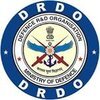




Reviews
Interviews
Salaries
Users

















